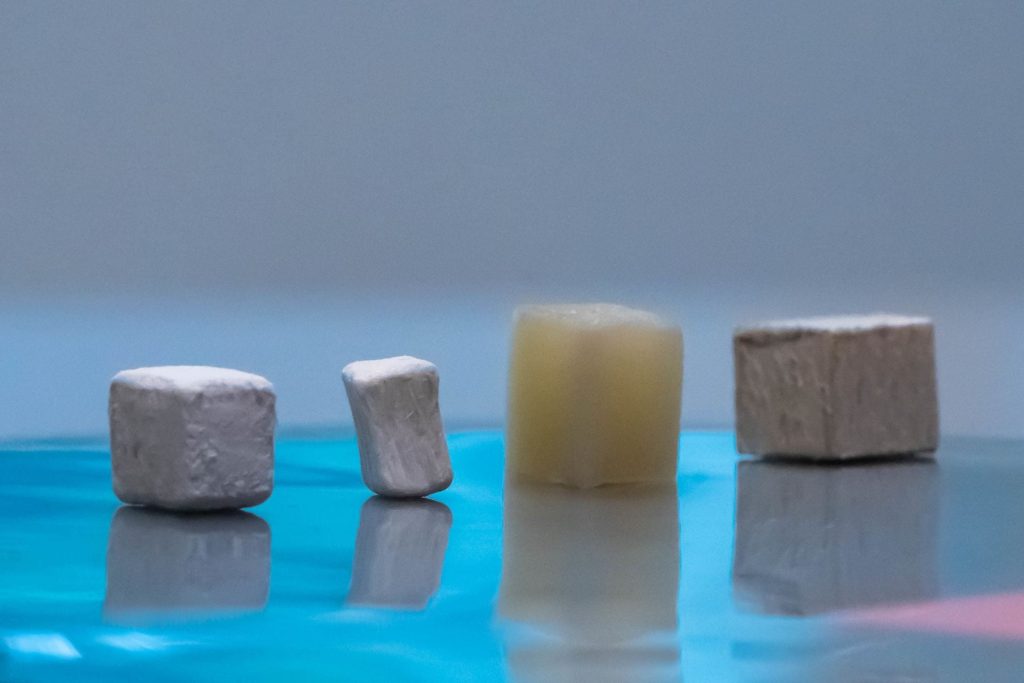The climate change discussion has centered on GHG (greenhouse gases), and particularly CO2 (carbon dioxide). Construction, apparently, is a major source of CO2 and various methods for minimizing or even eliminating the gas have been proposed. Structural materials like steel or cement come at a high cost both in dollars and carbon dioxide emissions; building construction and use accounts for an estimated 40% of emissions. On The Peggy Smedley Show on Tuesday, she will feature Tapio Vehmas, CEO, Carbonaide, to address a how a pilot production line can produce carbon-negative concrete using industrial side streams and carbon dioxide capture, utilization, and storage technology. The ultimate goal here is to make manufacturing concrete carbon negative.
Developing sustainable alternatives to existing materials could help mitigate climate change and reduce carbon dioxide emissions. Steps are underway to effect change in how concrete and other materials are processed while transportation methods are being evaluated for their impact on the climate.
One area for research has been wood, especially engineered wood. Engineered wood products are a high-performance, consistent, and environmentally positive choice for construction. Also called composite wood, man-made wood, or manufactured board, engineered wood includes a range of derivative wood products which are manufactured by binding the strands, particles, fibers, or veneers of wood, together with adhesives, to form composite materials.
These products are engineered to precise design specifications which are tested to meet national or international standards. Engineered wood products are used in a variety of construction applications, from home construction to commercial buildings to products used for joists and beams that replace steel in many building projects.
The engineered wood products market is estimated to grow at a CAGR (compound annual growth rate) of 6.8% between 2022 and 2027, according to Technavio. The size of the market is forecast to increase by $6.35 billion. Increasing residential and commercial construction activities are notably driving the engineered wood products market growth.
Developed economies such as the U.S. are investing in infrastructure development and the rising focus on real estate development, as well as the construction of new residences and offices, is expected to increase the sales of new wood products and furnishings. The rising demand for wood products is also complemented by the increase in the number of renovation and modification projects across key countries such as the U.S., China, and India.
However, the high volatility in raw material prices may impede the engineered wood products market growth. The fluctuations in raw material prices are estimated to have an adverse effect on profitability, the cost of sales, and the ability of vendors to address the demands of consumers effectively. Fluctuating crude oil prices have a direct, adverse effect on the pricing strategies of raw material suppliers. Thus, the volatility in raw material prices is estimated to be a key challenge for the global engineered wood products market during the forecast period.
Meanwhile, research is ongoing to find ways to augment the engineered wood currently being offered by providing even more sustainable and resilient products based on structural wood. For example, Rice University scientists have figured out a way to engineer wood to trap carbon dioxide through a potentially scalable, energy-efficient process that also makes the material stronger for use in construction. Working to address both issues at once, materials scientist Muhammad Rahman and collaborators found a way to incorporate molecules of a carbon dioxide-trapping, porous crystalline material into wood.

Chemically, wood is made up of three essential components: cellulose, hemicellulose, and lignin. Lignin is what gives wood its color, so when you take lignin out, the wood becomes colorless. To achieve the necessary change, the network of cellulose fibers that gives wood its strength is first cleared out through a process known as delignification.
Removing the lignin is a fairly simple process that involves a two-step chemical treatment using environmentally benign substances. After removing the lignin, bleach or hydrogen peroxide is used to remove the hemicellulose.
Next, the delignified wood is soaked in a solution containing microparticles of a MOF (metal-organic framework, known as Calgary framework 20 or (CALF-20), developed by University of Calgary Professor George Shimizu and others. MOFs are high-surface-area sorbent materials used for their ability to adsorb carbon dioxide molecules into their pores. The MOF particles easily fit into the cellulose channels and get attached to them through favorable surface interactions.
MOFs are among several nascent carbon capture technologies developed to address anthropogenic climate change. According to Rice researchers, there is no biodegradable, sustainable substrate for deploying carbon dioxide-sorbent materials. However, MOF-enhanced wood is an adaptable support platform for deploying sorbent in different carbon dioxide applications.
Even so, many of the existing MOFs are not very stable in varying environmental conditions. Some are very susceptible to moisture, and you don’t want that in a structural material. CALF-20, however, stands out in terms of both performance level and versatility under a variety of environmental conditions. The next step is to determine sequestration processes as well as a detailed economic analysis to understand the scalability and commercial viability of CALF-20.
Want to tweet about this article? Use hashtags #construction #sustainability #infrastructure


